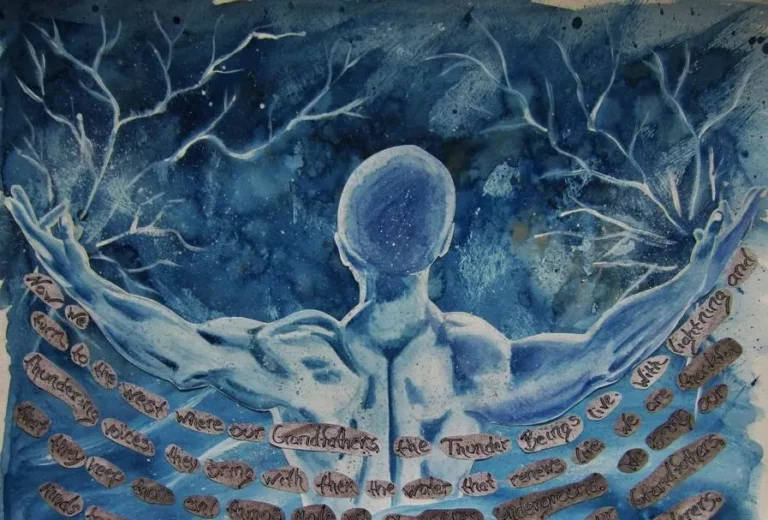A human being would certainly not grow to be seventy or eighty years old if this longevity had no meaning for the species. The afternoon of human life must also have a significance of its own and cannot be merely a pitiful appendage to life’s morning.
The significance of the morning undoubtedly lies in the development of the individual, our entrenchment in the outer world, the propagation of our kind, and the care of our children. This is the obvious purpose of nature.
But when this purpose has been attained—and more than attained—shall the earning of money, the extension of conquests, and the expansion of life go steadily on beyond the bounds of all reason and sense?
Whoever carries over into the afternoon the law of the morning, or the natural aim, must pay for it with damage to his soul, just as surely as a growing youth who tries to carry over his childish egoism into adult life must pay for this mistake with social failure. ~ Carl Jung
Carl Jung the Collected Works
Similar to Nietzsche’s stages of life in Thus Spoke Zarathustra, Carl Jung does not break down these stages by age, but by the evolution of a person. While we may jump from one stage to another, Jung sets a benchmark as to where we need to go.
By referring to Jung’s four stages of life, we can identify where we are and what we need to do to evolve further.
We’ve put out quite a few Carl Jung articles here, from his psychological diagnosis using mandalas to explaining anima animus. The people’s favorite though is the one based on Jungian archetypes.
Let’s take a look at the four stages of life according to Carl Jung ~
1) The Athlete
Narcissists are the ones who are probably trapped in this stage of life. This is the stage when people are most self absorbed and only bothered about the outer, and not the inner. Too much time in front of the mirror and not taking the effort to reflect on the inner.
This is the lowest level in Carl Jung’s Stages of Life and according to him this stage is an outcome of the physiological changes that we go through during our teenage years and the start of adolescence. Hence we aspire for better features, bodies, looks etc. Sadly there are some people who never grow beyond this stage of life.
Childhood and extreme old age are, of course, utterly different, and yet they have one thing in common: submersion in unconscious psychic happenings.
Since the mind of a child grows out of the unconscious its psychic processes, though not easily accessible, are not as difficult to discern as those of a very old person who is sinking again into the unconscious, and who progressively vanishes within it.
Childhood and old age are the stages of life without any conscious problems ~ Carl Jung
Carl Jung the Collected Works
2) The Warrior
As we move into early adulthood most people who experience the Athlete usually leave it behind to accommodate new responsibilities, giving birth to the warrior.
We are not talking about the peaceful warrior here 😉 But this Warrior Archetype is the one that makes a person want to stand out by fiercely defeating his competition, set goals and achieving them. To be the best, to have the best, to go forth and conquer.
At this stage one wants to always gain more than the other, Jung states this phase stems from life struggles that the start of adulthood hurls at us. While reading this most of us including me pondered about what’s wrong with setting goals and achieving them?
Well this Warrior is usually focused only on materialistic desires, its interesting to note that the warrior life stage is most frequently revisited phase of life. Every time you want to set a new goal, we welcome back the warrior in us!
3) The Statement
As we move deeper into adulthood, with the onset of parenthood a person grows beyond the self driven warrior into someone who is a benefactor. This does not need to be just in terms of children but it stems from an understanding that there is something deeper than what the material world has to offer.
At this point the self centeredness starts to dissolve and a life of service beckons. It’s not that you look down upon what you have amassed as a warrior, just that it doesn’t hold the same value as it did at that point of time.
The belief, to give is to receive begins to take hold – you move out of the egocentric approach and take a more ecocentric approach. You choose to make the world a better place it was than when you came into it. This stage is a catalyst from the warrior phase to the final stage, the spirit.
4) The Spirit
The final stage, when you are no longer defined by man-made terms. The spirit is when you identify yourself, you’re not the experiences you have had nor the money you made or your culture or nationality.
A phenomenal amount of inner work has helped you reach this stage, the realization that you’re just a spirit traversing through this human experience has sunk in. You have gotten out of the box, opened your mind and widened your perspective enough to see yourself for who you truly are.
Jung notes that not every human being will reach this stage, some will get stuck in one of the three above. But for those who make it, this realization comes forth, the person who you were before this was never really you.
“Thoroughly unprepared, we take the step into the afternoon of life. Worse still, we take this step with the false presupposition that our truths and our ideals will serve us as hitherto. But we cannot live the afternoon of life according to the program of life’s morning, for what was great in the morning will be little at evening and what in the morning was true, at evening will have become a lie.” ~ Carl G. Jung
“We meet ourselves time and again in a thousand disguises on the path of life.” ~ Carl Jung
References:
The contents of this article have been derived from Jung’s article “Stages of Life,” in The Portable Jung, ed. by Joseph Campbell(1976), pp.4-5, 9-12.
Image Sources:
Carl Jung Art







 Nothing has too much power that it cannot be deflated of that power. Nothing is so extraordinary that it cannot be whittled down to its ordinary parts. No “God” is immune to being existentially mocked. Nothing is perfect. Everything is fleeting, impermanent, transitory. Nothing is infallible except for the universal laws that govern the cosmos.
Nothing has too much power that it cannot be deflated of that power. Nothing is so extraordinary that it cannot be whittled down to its ordinary parts. No “God” is immune to being existentially mocked. Nothing is perfect. Everything is fleeting, impermanent, transitory. Nothing is infallible except for the universal laws that govern the cosmos.





